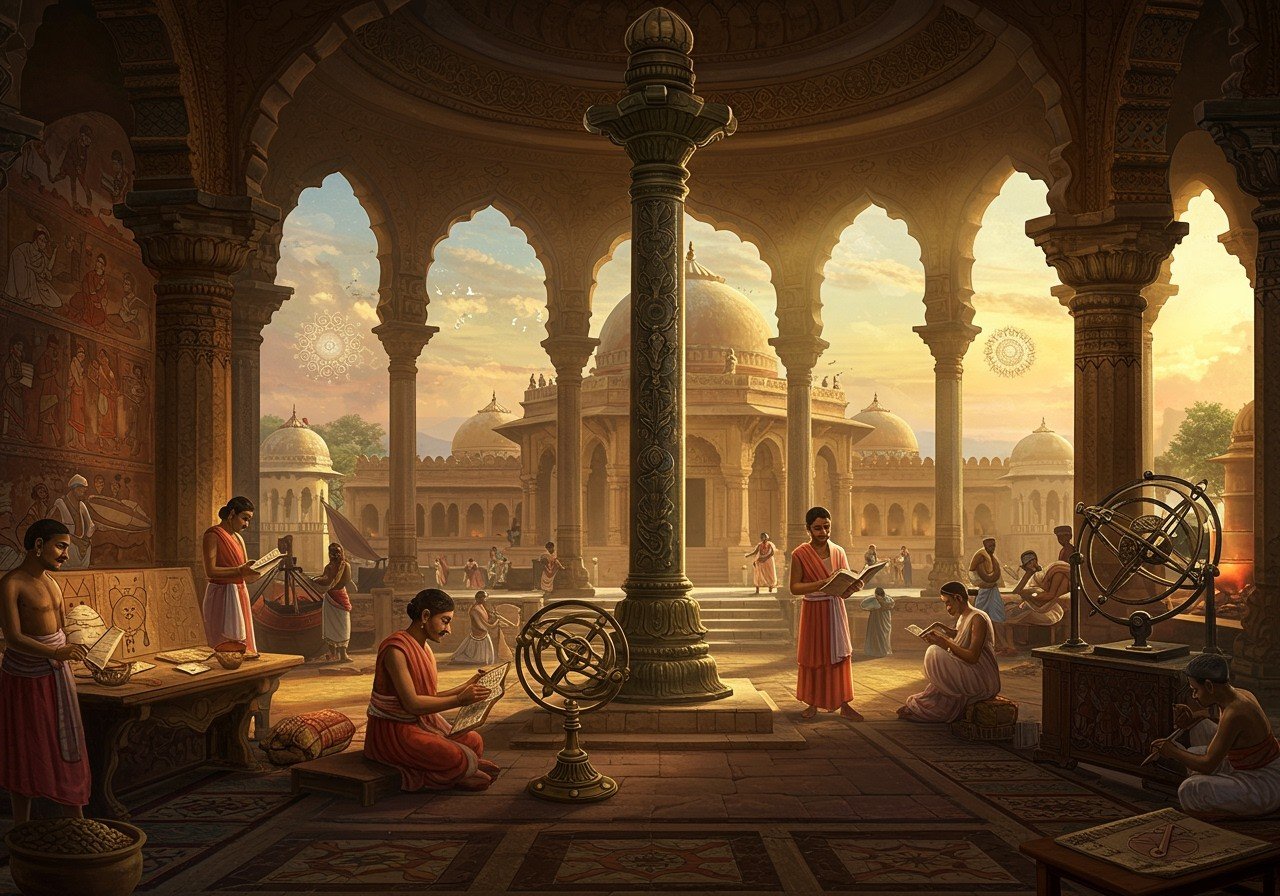
The Golden Age of India represents a time of extraordinary cultural, economic, and scientific flourishing, often hailed as the pinnacle of Indian civilization. This era witnessed remarkable progress across diverse fields, leaving an enduring legacy. This blog post delves into the specifics of this golden period, providing a comprehensive historical overview for culturally conscious individuals who appreciate tradition and authenticity.
What Defined the Golden Age of India?
The term Golden Age denotes an era of exceptional prosperity and achievement in Indian history. Several factors contributed to this period earning this prestigious title:
- Art and Literature: This era witnessed remarkable advancements in artistic expression and literary creations, with masterpieces like Kalidasa’s works emerging as prominent examples. Explore our collection of Valmiki Ramayana texts to delve deeper into the literary treasures of this period.
- Science and Medicine: Significant progress occurred in medicinal practices and astronomy, with scholars like Aryabhata making groundbreaking contributions.
- Governance and Economy: Flourishing trade and commerce propelled economic prosperity, creating a stable and thriving society.
- Architecture and Engineering: Iconic structures like the Ajanta and Ellora caves stand as testaments to the architectural ingenuity of the time. You can enhance your home temple with similar aesthetics by exploring our brass Radha-Krishna murtis at Poojn.in.
- Education and Scholarship: Renowned institutions like Nalanda and Takshashila fostered advanced education, nurturing intellectual growth and scholarly pursuits.
- Societal Harmony and Stability: Society experienced a period of harmony and stability, supported by just and benevolent rulers.
These elements combined to create an environment conducive to extraordinary cultural and scientific growth.
When was the Golden Age of India?
The Golden Age of India is primarily associated with the Gupta Empire (4th to 6th century CE), a period known for its remarkable achievements in various domains. This era is particularly associated with advancements in literature, art, and science, with figures like Kalidasa and Aryabhata making substantial contributions. The Gupta dynasty, under rulers like Samudra Gupta and Chandragupta II, is renowned for its prosperity and creativity. Other periods, such as the Chola Dynasty, are also considered golden ages due to their significant accomplishments. Key events and milestones within the Gupta Empire include:
- Chandragupta I (around 320 CE): The founder of the Gupta dynasty, he laid the foundation for this remarkable period.
- Samudragupta: His conquests and military prowess expanded the empire’s reach and influence.
- Chandragupta II (also known as Vikramaditya): His reign is considered the zenith of the Golden Age, marked by exceptional cultural and intellectual achievements.
This period established a strong foundation for future advancements. Comparing this era with other golden ages globally highlights its distinctive characteristics. The decline of the Gupta Empire around 550 CE marked the end of this prosperous era.
Where did the Golden Age of India Unfold?
The Golden Age primarily flourished in Northern and Central India under the Gupta Empire’s dominion. Important cities and regions included:
- Pataliputra (present-day Patna): The capital of the Gupta Empire, a major center of administration, commerce, and culture.
- Ujjain: A prominent center of learning, trade, and religious significance.
- Mathura: Known for its artistic and cultural heritage, a hub of religious and intellectual activity.
These areas served as cultural and economic hubs, facilitating prosperity and growth. The Gupta influence extended beyond India’s borders, interacting with regions like Southeast Asia. Discover artifacts and ritual items reminiscent of this era at Poojn.in, India’s leading online store for cultural and religious goods.
Cultural Achievements of the Golden Age
The Golden Age witnessed extraordinary cultural developments:
- Classical Music and Dance: This period saw the evolution of classical dance forms like Bharatanatyam and Kathak, which continue to be celebrated today.
- Literature: Masterpieces by Kalidasa, such as the play Shakuntala and the poem Meghaduta, enriched Sanskrit literature. You can find a collection of such literary works at Poojn.in.
- Visual Arts: The intricate sculptures and paintings adorning the Ajanta and Ellora caves stand as remarkable examples of artistic brilliance.
- Religious and Philosophical Developments: The spread of Buddhism and Jainism gained momentum, influencing various aspects of life and thought.
- Sanskrit Language and Literature: Panini’s standardization of Sanskrit grammar had a profound and lasting impact on Indian languages and literary traditions.
Economic Prosperity During the Golden Age
The Golden Age was characterized by robust economic growth and stability:
- Extensive Trade Routes: The development of extensive trade routes facilitated both internal and external economic expansion, connecting India with distant lands. Incense played a significant role in trade during this era. Explore our range of sandalwood incense sticks at Poojn.in to connect with this historical tradition.
- Agricultural Innovations: Advancements in farming techniques and irrigation systems boosted agricultural productivity, ensuring food security and economic prosperity. Celebrate the abundance of this era by adorning your Laddu Gopal with traditional attire, available at Poojn.in.
Scientific and Technological Advancements
This era witnessed remarkable scientific progress:
- Mathematics and Astronomy: Scholars like Aryabhata made groundbreaking contributions to mathematics and astronomy, including the concept of zero and the decimal system.
- Metallurgical Techniques: Advancements in metallurgical techniques led to the production of high-quality steel, contributing to various industries and crafts.
Legacy and Influence of the Golden Age
The Golden Age of India left a profound and enduring legacy:
- Cultural Traditions: Many cultural traditions originating from this era continue to be practiced today, enriching Indian culture.
- Art and Literature: The art and literature of the Gupta period have influenced generations of artists, writers, and thinkers.
Conclusion
The Golden Age of India stands as a testament to the extraordinary achievements and cultural richness of our past. This period of prosperity, creativity, and harmony has left an indelible mark on our traditions and heritage. By understanding and appreciating our history, we can draw inspiration and pride from the accomplishments of this remarkable era.


